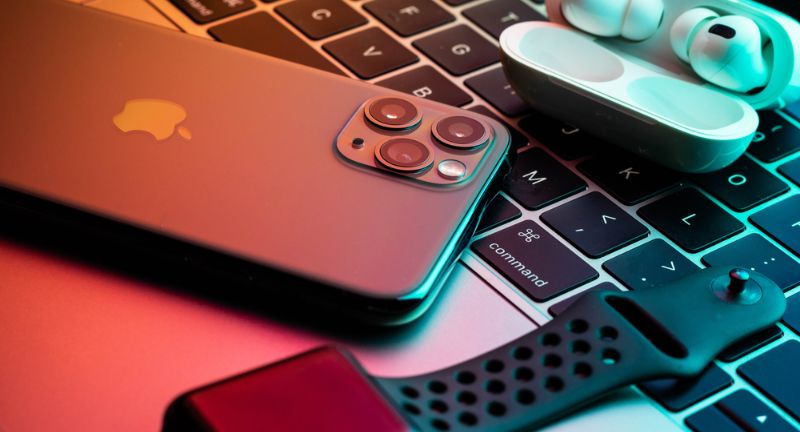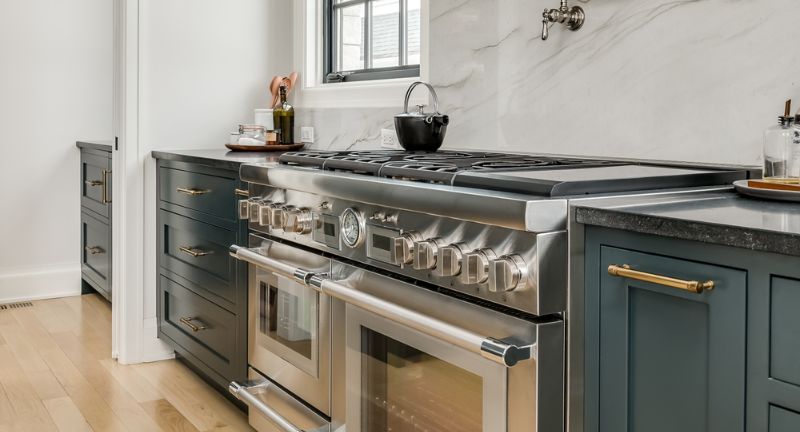LIFE
20 Indulgent Purchases That Trap the Middle Class
Published
7 months agoon

Shutterstock
The middle class often faces financial challenges, and indulgent purchases can worsen these struggles. From luxury cars to designer clothing, these seemingly harmless splurges can add up and create a significant financial burden. Many middle-class individuals find themselves stuck in a cycle of debt and limited savings due to these high-cost indulgences. By recognizing and understanding these common financial traps, individuals can make more informed decisions. This article highlights twenty indulgent purchases that frequently ensnare the middle class, leading to financial instability.
Luxury Cars

Shutterstock
High-end vehicles have hefty price tags that can severely impact one’s budget. Additionally, luxury cars often require expensive maintenance and repairs that can further strain finances. Insurance premiums for luxury cars are also significantly higher, adding to the overall cost. This combination of high upfront costs and ongoing expenses can drain resources that can be better used for savings or investments.
Oversized Homes

Shutterstock
Purchasing a home beyond one’s means can lead to high mortgage payments that dominate the monthly budget. Property taxes on larger homes are also significantly higher, adding another financial burden. Maintenance and upkeep of oversized homes require considerable funds and time. This can limit the ability to save for other financial goals or emergencies.
Designer Clothing and Accessories

Shutterstock
Regularly buying high-end fashion items can quickly add up, making a significant dent in disposable income. These items often come with premium price tags that do not necessarily correspond to quality or durability. The pursuit of trendy designer pieces can lead to excessive spending. This habit diverts funds from more essential expenses or savings, leading to financial instability.
Expensive Gadgets

Shutterstock
Frequent upgrades to the latest smartphones, tablets, and other tech gadgets can be a continuous financial drain. These purchases often incur high upfront costs and may require additional spending on accessories and software. Additionally, the rapid pace of technological advancement means that these gadgets quickly become outdated, prompting further spending. This cycle of constant upgrading can prevent individuals from saving money or investing in long-term financial goals.
High-End Appliances

Shutterstock
Opting for top-of-the-line appliances for kitchens and homes, which often come with high price tags, can significantly impact one’s budget. While these appliances may offer advanced features, their high cost, and potential repair expenses can outweigh their benefits. Maintenance and repair costs for high-end appliances are also typically higher than for standard models. This can strain finances, especially if the purchases are made on credit.
Luxury Vacations

Shutterstock
Overspending on lavish vacations can lead to significant financial strain, especially if these trips are financed with credit. The costs of luxury accommodations, dining, and activities can quickly add up, creating a large debt to repay. Additionally, frequent luxury travel can prevent individuals from saving for future needs or emergencies. This indulgence can lead to long-term financial instability and stress.
Eating Out Frequently

Shutterstock
Regularly dining at upscale restaurants or ordering takeout can significantly inflate monthly expenses. The convenience of eating out comes with a high cost compared to home-cooked meals. Over time, these frequent indulgences can add up to a substantial amount that could have been saved or invested. This habit can also contribute to unhealthy financial and dietary patterns.
Subscription Services

Shutterstock
Subscribing to multiple streaming services, premium memberships, and monthly subscription boxes can add up over time. While seemingly small, these recurring charges can collectively create a significant expense. Often, people forget about these subscriptions, leading to unnecessary ongoing costs. This can divert funds from more important financial goals such as saving and investing.
High-Interest Credit Cards

Shutterstock
Using credit cards with high interest rates for unnecessary purchases can lead to mounting debt and interest payments. High-interest charges can quickly accumulate, making it difficult to pay off the balance. This can create a cycle of debt where most of the payments go towards interest rather than reducing the principal amount. This financial trap can severely hinder the ability to save and invest.
Leasing Cars

Shutterstock
Leasing cars instead of buying can lead to perpetual monthly payments without building any equity in the vehicle. Although leasing may have lower monthly payments initially, it often costs more in the long run. At the end of the lease term, there is no asset ownership, so another lease or purchase is required. This cycle can prevent individuals from making more financially beneficial decisions, such as buying a car outright.
Gym Memberships and Personal Trainers

Shutterstock
High-cost gym memberships and personal training sessions that go unused can waste significant amounts of money. Many people sign up with the best intentions but must fully utilize these services. The monthly fees for premium gyms and personal trainers can add up quickly, leading to unnecessary expenses. This money could be better allocated towards more consistent and effective fitness solutions or other financial goals.
Luxury Furniture

Shutterstock
Investing in expensive furniture and decor items can strain finances, especially when bought on credit. While luxury furniture may enhance the home’s aesthetic, it often comes with high costs that can lead to debt. The ongoing care and maintenance of these items can further add to expenses. This indulgence can limit funds available for other essential needs or financial goals.
Wedding and Event Expenses

Shutterstock
Overspending on weddings, parties, and other events can deplete savings and lead to debt. The costs of venues, catering, decorations, and entertainment can quickly escalate, exceeding the budget. Financing these events through loans or credit can create long-term financial burdens. This can impact financial stability and limit future opportunities for saving and investing.
Private School Tuition

Shutterstock
Opting for costly private education over public schooling can strain a family’s budget significantly. The high tuition fees and additional costs for uniforms, books, and extracurricular activities can add up quickly. While private schools may offer certain advantages, the financial burden can outweigh these benefits. This expense can limit a family’s ability to save for college or other essential financial goals.
Cosmetic Procedures

Shutterstock
Spending on elective cosmetic surgeries and treatments can be a significant financial burden. These procedures often come with high costs that are not covered by insurance. Additionally, there may be ongoing expenses for follow-up treatments and maintenance. This financial commitment can divert funds from more essential needs and long-term savings.
Home Renovations

Shutterstock
Overextending on home improvement projects beyond what’s affordable can lead to debt and financial stress. While renovating can add value to a home, it often involves unexpected costs and delays. Financing these projects through loans can result in high-interest payments. This financial strain can limit the ability to save for other important financial goals or emergencies.
High-Cost Hobbies

Shutterstock
Investing in expensive hobbies, such as golfing, boating, or high-end gaming setups, can divert funds from essential expenses. These hobbies often require ongoing spending on equipment, memberships, and maintenance. The high costs associated with these activities can prevent individuals from saving or investing in their future. This indulgence can lead to financial instability and stress.
Collectibles and Art

Shutterstock
Spending large sums on collectible items or art pieces can be risky and tie up funds that could be used for more stable investments. While these items may appreciate in value, they also come with storage, insurance, and maintenance costs. The market for collectibles and art can be volatile, making it a less secure financial investment. This can limit liquidity and financial flexibility, impacting overall financial health.
Luxury Pet Products

Shutterstock
Spending excessively on high-end pet food, accessories, and grooming can add up quickly. While caring for pets is important, luxury products often come with premium prices that strain the budget. These ongoing expenses can limit funds available for other essential financial goals. This indulgence can lead to unnecessary financial stress and instability.
Private Clubs and Memberships

Shutterstock
Joining exclusive clubs or memberships with high fees can be a continuous financial drain. These memberships often come with costly annual dues, initiation fees, and additional expenses for participation. While they may offer networking opportunities or status, the financial commitment can outweigh these benefits. This expense can divert funds from more critical financial goals, such as saving for retirement or emergencies.
Conclusion

Shutterstock
Avoiding financial traps requires awareness and discipline, especially for the middle class. By recognizing and reevaluating indulgent purchases, individuals can make more prudent financial choices. Prioritizing savings and investments over luxury spending can improve financial stability and future security. It’s essential to balance enjoying life’s pleasures and maintaining financial health. With mindful spending habits, the middle class can work towards achieving long-term financial goals without falling into common financial pitfalls.
Related Topics:

More Money + Investing
-


Avoid Tax Time Stress With These 25 Expert Tips
-


24 of the Fastest Ways to Build Passive Income
-


5 Things That Are No Longer Worth Buying
-


20 Things You Should Never Leave in a Will
-


I Won the Lottery! Now What? A Guide to Staying…
-


Low Stress Jobs That Pay Over $70,000
-


25 Indicators That Your Old Watch is Actually Really Valuable
-


5 Top Remote Jobs For Baby Boomers
-


7 Once Affordable Things That Are No Longer Worth It
-


25 Tips For Living Well on Social Security
-


7 Scams Targeting Older People And How To Protect Your…
-


Social Security Adjustments Coming In 2024 – Here’s What You…